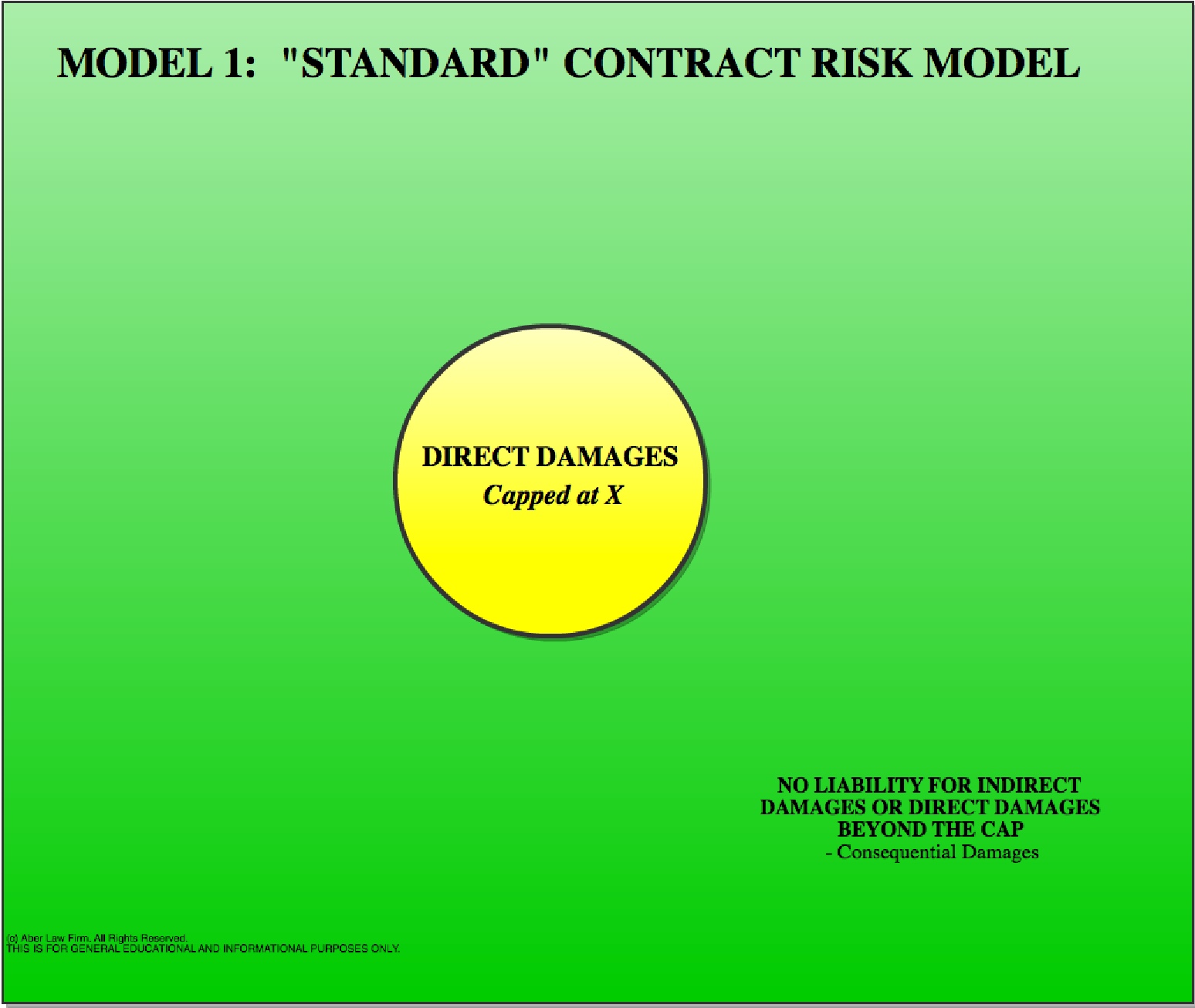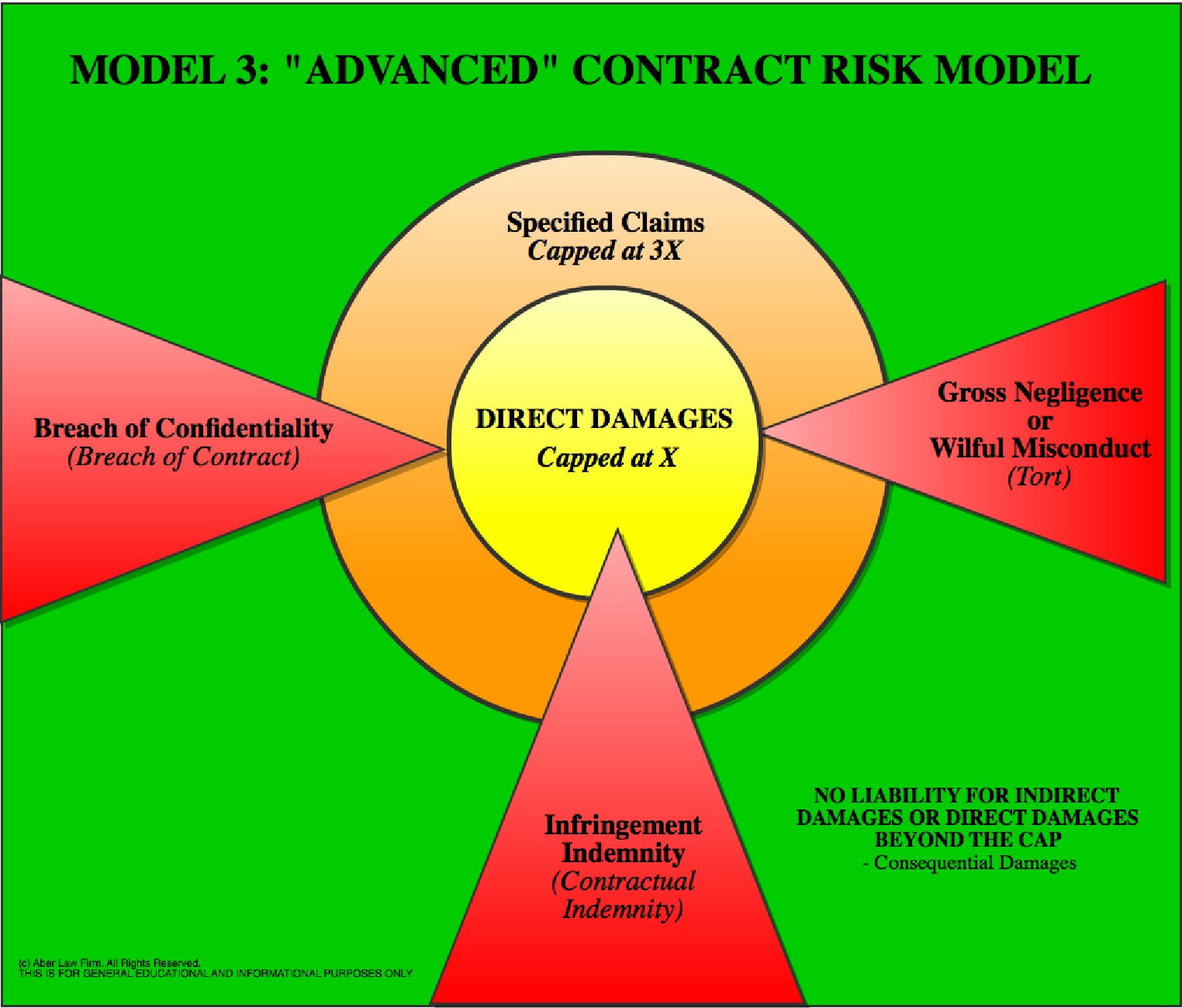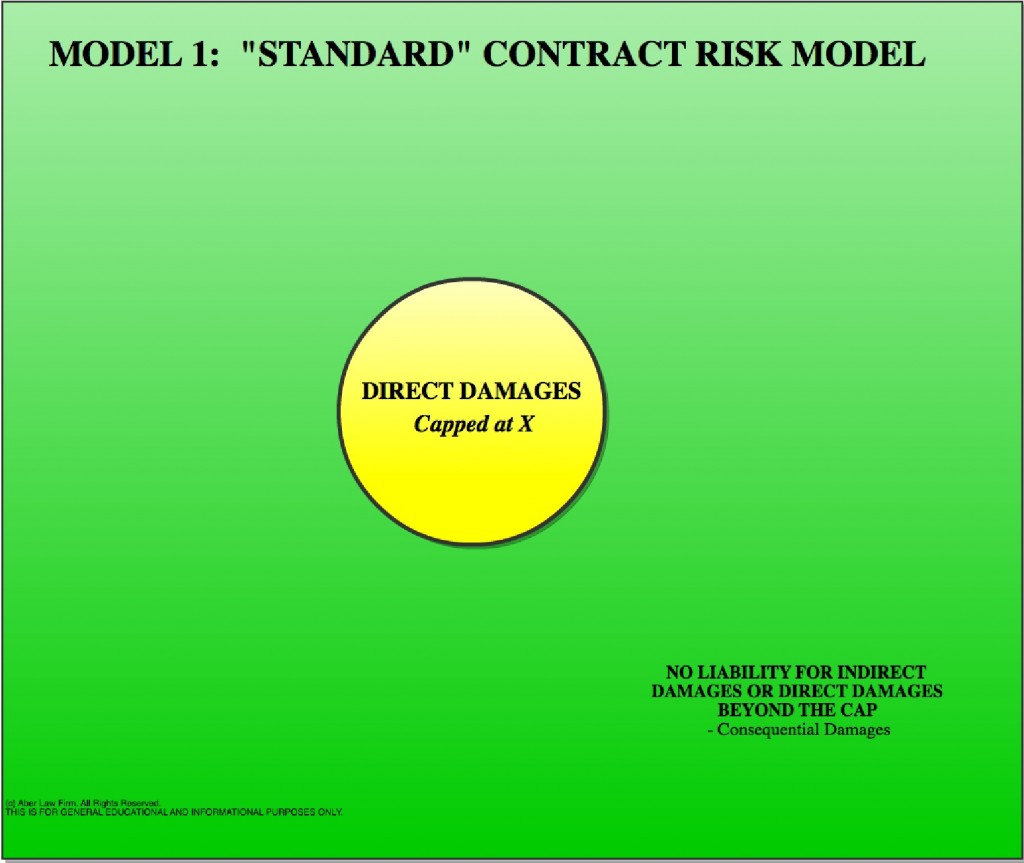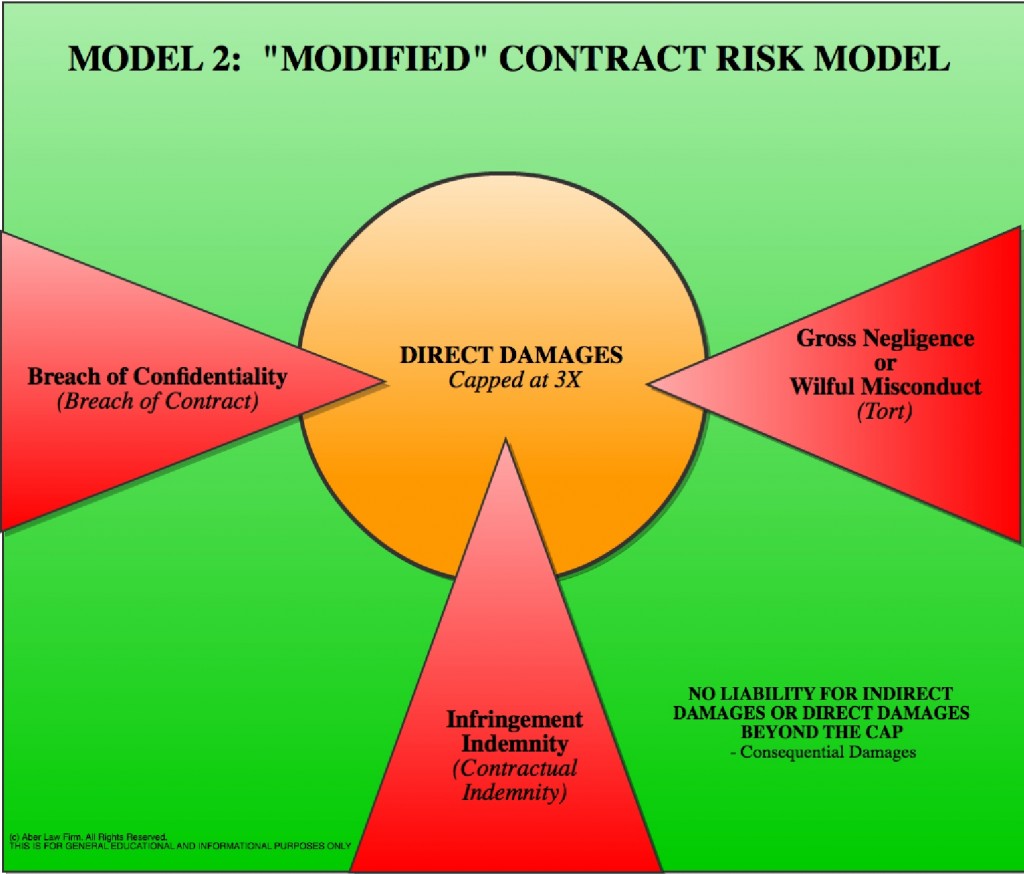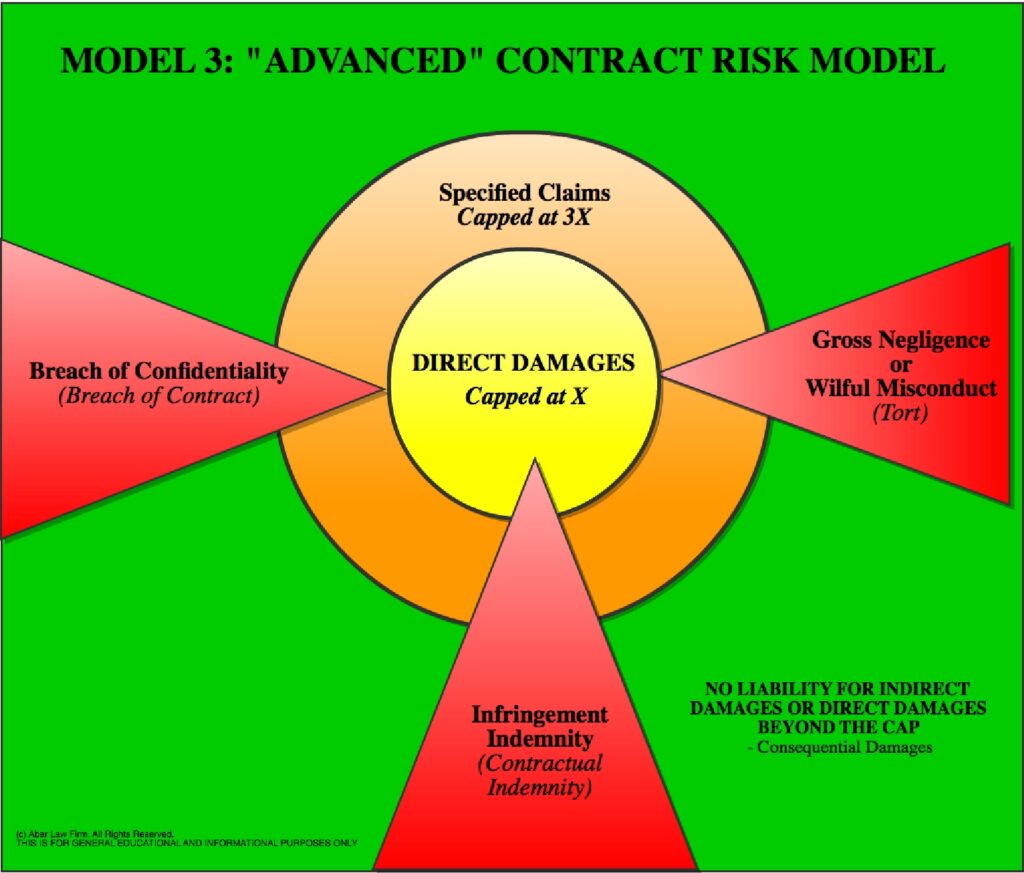Don’t be surprised if you don’t totally understand this SaaS agreement question, even though you want to know the answer. Ok, let me explain, and this will (hopefully) become clearer.
In every SaaS transaction, the law imposes a liability model that is limited only by what your customer can prove as its damages under contract law. Therefore, each SaaS agreement has an embedded contractual risk/liability model (i.e. limitation of liability clause) that modifies the liability model with the purpose of lowering your risk (…stick with me, as this is not that hard). You can recognize these models by their language, which looks something like: “X is not liable for indirect, special or consequential damage . . X liability for direct damages is limited to . . . “ These clauses are actually super important, so don’t ignore these as simply legal “boilerplate” language. In fact, most SaaS lawyers would say that these clauses are the most important clauses in any SaaS agreement.
Let’s take a conceptual look at 3 different contractual risk/liability models to get a sense of how they work.
Model 1: Standard model, where vendor is liable only for direct damages up to 1X (e.g. amount paid in the last 12 months).
Model 3: Advanced model, which is the same as Model 2 but direct damages are limited to 1X and certain claims are limited to 3X.
So the takeaway here is for you to get a better understanding of what your SaaS agreement liability model looks like. So grab your agreement and go find this language. It may not look exactly like one of these but I bet it is close to one of them. If you now have a better understanding of these embedded risk models, then you are closer to deciding what language is right for your company (and what you may ‘consider‘ agreeing to in a larger/enterprise SaaS deal)–which is really the goal here. Go ahead and give it a try, and let us know what you figured out.
Jeremy Aber & Ken Sidelinger
Disclaimer: This post is for informational and educational purposes only, and is not legal advice. You should hire an attorney if you need legal advice, which should be provided only after review of all relevant facts and applicable law.

